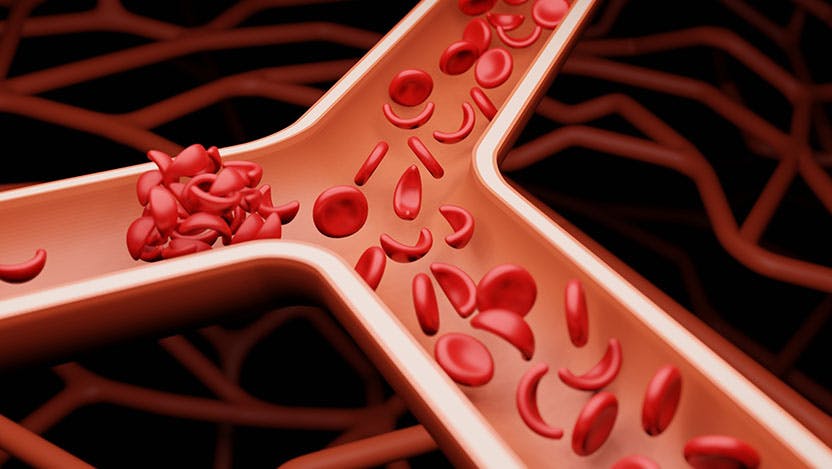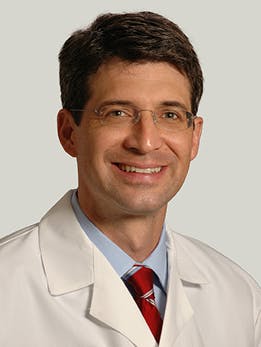New study shows promising evidence for sickle cell gene therapy

New research published in the New England Journal of Medicine indicates that stem cell gene therapy may offer a promising, curative treatment for the painful, inherited blood disorder sickle cell disease (SCD).
The findings from a new clinical trial, published August 31, add to the body of evidence supporting gene therapy as a treatment for sickle cell disease, which primarily impacts people of color.
About 100,000 Americans have sickle cell disease, sickle cell disease.
As part of the trial, researchers used CRISPR-Cas9 to edit specific genes in stem cells — the building blocks of blood cells — taken from each patient. The edits increased the cells’ production of fetal hemoglobin (HbF), a protein that can replace unhealthy, sickled hemoglobin in the blood and protect against the complications of sickle cell disease. The patients then received their own edited cells as therapeutic infusions.
The biggest take-home message is that there are now more potentially curative therapies for sickle cell disease than ever before that lie outside of using someone else’s stem cells.
The therapy was the second for this disease to use CRISPR-Cas9 technology and the first to target a new genetic area and use cryopreserved stem cells with the hope of increasing access to such a treatment. Other gene therapy studies for SCD have used lentiviruses — a type of virus often modified and used for gene editing which remain in the cell long-term. No foreign material remains in stem cells edited with CRISPR-Cas9.
Trial participants who received the CRISPR-edited stem cells reported a decrease in vaso-occlusive events, a painful phenomenon that occurs when sickled red blood cells accumulate and cause a blockage.
“The biggest take-home message is that there are now more potentially curative therapies for sickle cell disease than ever before that lie outside of using someone else’s stem cells, which can bring a host of other complications,” said James LaBelle, MD, PhD, director of the Pediatric Stem Cell and Cellular Therapy Program at UChicago Medicine and Comer Children’s Hospital and senior author of the study. “Especially in the last 10 years, we’ve learned about what to do and what not to do when treating these patients. There’s been a great deal of effort towards offering patients different types of transplants with decreased toxicities, and now gene therapy rounds out the set of available treatments, so every patient with sickle cell disease can get some sort of curative therapy if needed. At UChicago Medicine, we’ve built infrastructure to support new approaches to sickle cell disease treatment and to bring additional gene therapies for other diseases.”
As the scientific community continues to refine and expand the applications of gene therapy, the potential for curative treatments for diseases like sickle cell disease is becoming more of a transformative reality. The journey is ongoing, with the need for long-term follow-up and further research, but this study provides an encouraging glimpse into a future of effective genetic interventions.
In the larger context of therapeutic development, LaBelle stressed the importance of the study's contribution to the growing body of evidence supporting the viability of gene therapy as a treatment for sickle cell disease. Two other gene therapies for the disease are awaiting FDA approval this year.
“The data from this trial supports bringing on similar gene therapies for sickle cell disease and for other bone marrow-derived diseases. If we didn't have this data, those wouldn't move forward,” he said.
The study, “CRISPR-Cas9 Editing of the HBG1/HBG2 Promoters to Treat Sickle Cell Disease,” was published in NEJM in August 2023. Co-authors include Radhika Peddinti, along with researchers from St. Jude Children’s Research Hospital, Memorial Sloan Kettering Cancer Center, Novartis Institutes for BioMedical Research, Children’s Hospital Los Angeles, and IRCCS San Raffaele Hospital in Milan, Italy. The authors also acknowledged research coordinator Christopher Omahen and Amittha Wickrema, director of UChicago's cell processing facility.

James LaBelle, MD, PhD
James Labelle, MD, PhD, provides care for children of all ages with cancer and blood diseases, including leukemia and lymphoma. In particular, Dr. LaBelle specializes in stem cell transplantation, replacing a patient's diseased bone marrow and immune system with healthy cells.
Learn more about Dr. LaBelle